The Ring Doorbell is easy to install (according to the marketing): attach the mounting bracket, hook the doorbell over it, fit the security screws – and you’re done. Simple. Then the wide angle lens will capture a full view of your visitors, including their faces. Great. But what happens if you have a narrow or awkward door frame?
Using wedge or corner kits are key with narrow installs, as is using the thinnest Ring model (such as the Pro). But even then you might end up with poor – or obscured – video captures if you aren’t careful.
Why Ring Doorbells In A Narrow Space Is An Issue
Ring doorbells are designed to capture a full view of what’s outside (that’s kind of their selling point!). This is achieved by having a wide angle lens. The presents a few issues, however:
Problem 1: When Your Door Is Inset
A problem can occur if your door and its frame sits more than a few inches into the wall, such as:
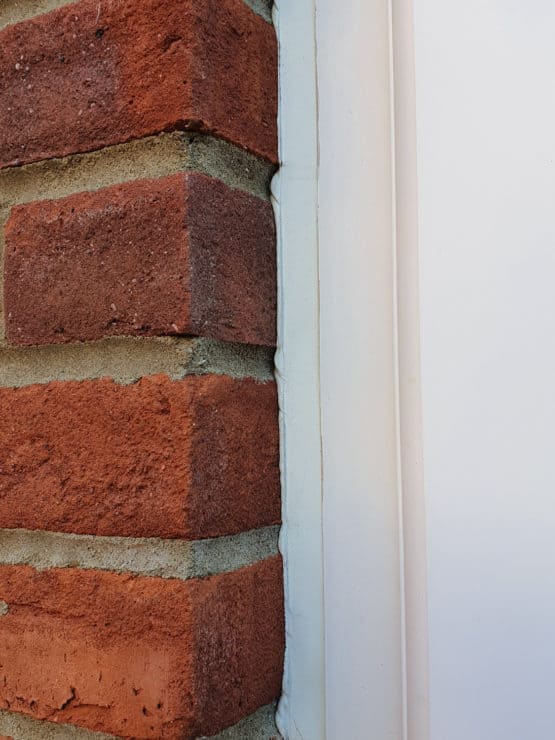

The issue here is that a lot of the captured video (possibly as much as half) will pick up the wall and not your visitors:
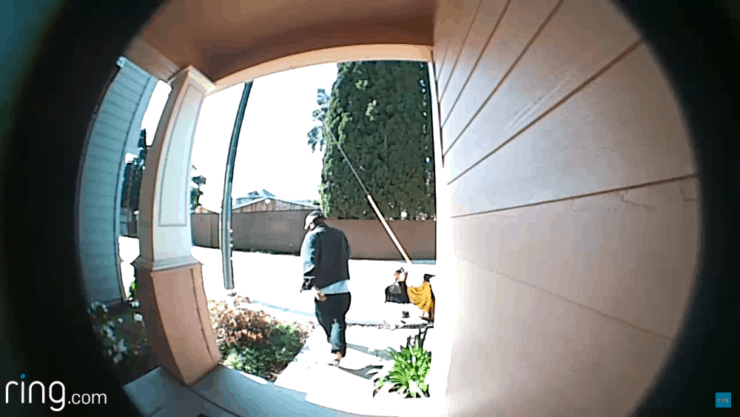
In some cases, this can also lead to blind spots, where a well-informed thief could approach your property from the ‘wall side’ – where the Ring can’t capture them. This is particularly problematic if your door is inset more than a few inches, and you don’t have a porch. The first time the Ring doorbell will capture them is when they are fully in front of your door – at which point, only their body will be captured.
Not much crime prevention can occur if the person’s face can’t be seen when they approach!
Solutions 1 and 2 (below) cover how to fix this particular problem.
Problem 2: When Your Door Frame Is Thin/Narrow
The Ring Doorbell 2 is 2.5″ (6.35cm) wide. Whilst the average door frame is more than this, such a width is definitely a problem if your door frame is like this:
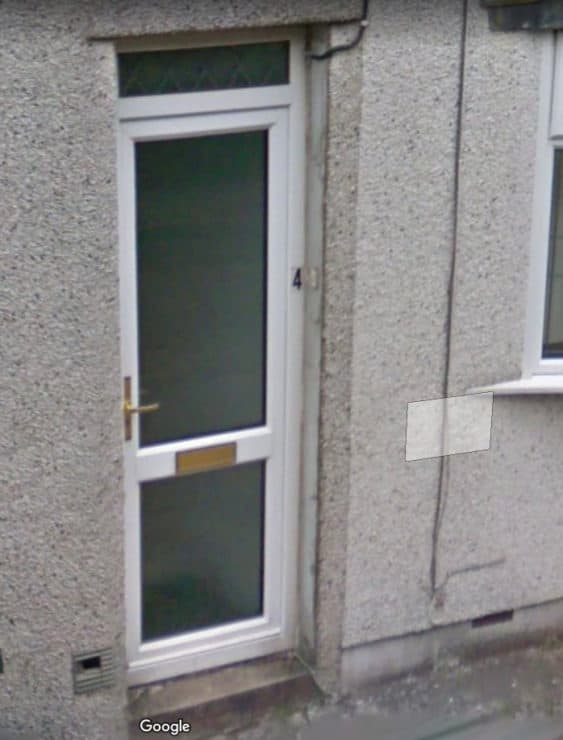
The door frame here is less than 2″ (5cm) – less than the minimum width of the Ring Doorbell 2.
This is part of the issue with the Ring Doorbell 1 and 2 (the 1 is slightly less wide, at 2.4″/6.17cm). It has an internal battery which you can use instead of hardwiring it, but this makes the unit bulkier and wider.
Solutions 3-5 (below) cover how to fix this type of problem.
Solutions to Narrow, Inset (or Corner) Installs
If your door is inset from your wall (as I covered in problem 1, earlier) then solutions 1 or 2 below can work well. However if your door frame is simply too small, then solutions 3 onwards will be useful.
Solution 1: Use a Corner Kit
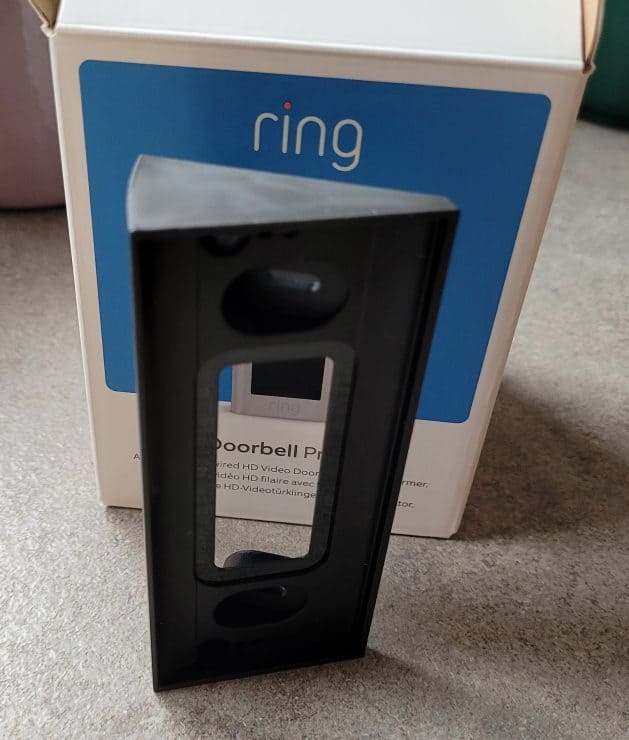
A corner kit – also known as an angle mount – allows you to change the direction that the Ring points at, and hence it changes the field of video capture.
This is useful if you would only get a partial view due to a wall being directly adjacent to where the Ring will be installed. Instead of having 40-50% of your video captures being the side wall, you can get 0% wall and 100% useful video capture!
These kits tend to offer a tilt of between 30-50 degrees in either direction, making them quite useful:
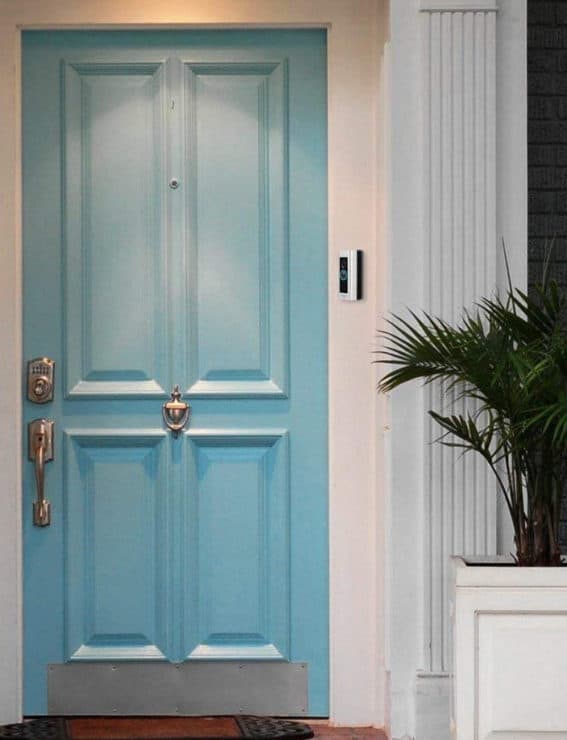
This can also be useful if you want to get a better view of people walking up/down your street towards your house – especially if you are an end house in your street. You can angle the Ring more in this direction and get more useful capture.
Solution 2: Use A Wedge Kit
A Ring should usually be installed at 48″ (121cm) off the ground. This might seem weird considering that many doorbells require you to reach up to them a bit – perhaps at 64″ (163cm) off ground level.
But this is due to how the wide angle lens works, and it’s so that a person’s body and face can be captured – even at fairly close range.
However, it might not be possible to install it this low. There might be something in the way which would affect video capture at this height, or perhaps you want to hardwire it and your existing doorbell is higher up.
In this case it is best to use a wedge kit which allows you to vertically tilt the Ring doorbell, allowing you to capture more of what you want to see (such as approaching visitors) and less of what you don’t want to see (such as the road and houses across the road!).
Ring sell an official wedge tilt kit which comes in three stackable wedges allowing you to achieve 5-15% vertical degrees of tilt:

Solution 3: Buy The Ring Doorbell Pro 1/2, Or Wired
Some Ring Doorbells (such as the 1, 2, 3 and 4 models) contain a battery, and this makes them much bulkier than the hardwired Ring Doorbells (such as the Pro 1, Pro 2 and Wired models).
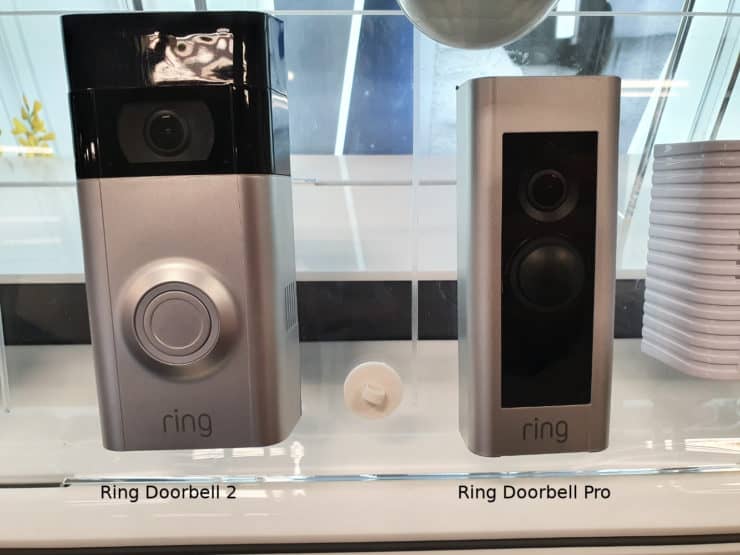
The pictured Ring Doorbell 2 contains a battery (incase you can’t hardwire it), but this makes the unit bulkier – up to 36% wider than the Pro, infact. The exact dimensions of a few of the models are below:
| Product | Height | Width | Depth | Contains Battery? |
| Ring Doorbell 1 | 5″ (12.65cm) | 2.4″ (6.17cm) | 0.9″ (2.21cm) | Yes |
| Ring Doorbell 2 | 5″ (12.83cm) | 2.5″ (6.35cm) | 1″ (2.74cm) | Yes |
| Ring Doorbell Pro | 4.5″ (11.43cm) | 1.8″ (4.67cm) | 0.8″ (2.03cm) | No |
The width of a doorbell is key, and you might find that the extra ⅔” (1.68cm) width that the Ring 2 requires – compared to the Pro – is just too much. If you go into an electrics store and feel each of the Ring doorbells, you will quickly notice that the battery doorbells (the 1, 2, 3 and 4) feel – and appears – much bulkier than the Pro 1/2:
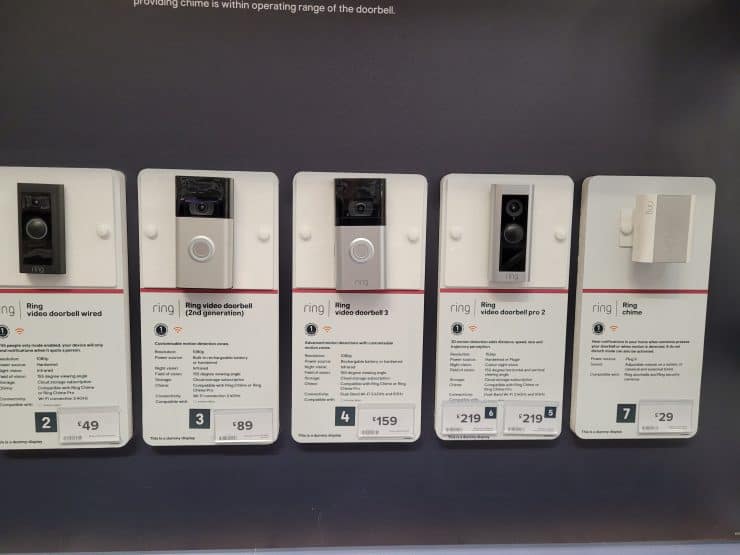
So if your door frame is too narrow, you might want to ditch a battery-based doorbell and go for the Pro 1/Pro 2 or Wired models – assuming that you’re able to hardwire it, of course.
Solution 4: Mount on Your Main Wall (Not The Door Frame)

If you’re unable to find enough space (even with a Pro, or a corner kit) to install your Ring Doorbell, then the other option is to install your smart doorbell on the wall next to your door instead.
This can work really well, especially for the Ring Doorbell 1 and 2 which doesn’t need to be hardwired.
It will be tricky to install if you want to hardwire it and you don’t have an existing doorbell on the wall, however (because you would need to run cables through the wall).
Just be careful not to mount it too far away from the door, otherwise the video capture might not always capture your visitors properly. Plus some visitors might not see it there, and knock your door instead.
Solution 5: Mount on Your Door
Following on from solution 4, you should also consider installing your Ring Doorbell on the door itself if you can’t mount it to the frame.
This is a good option for the battery-powered Doorbells (1, 2, 3 and 4), although you won’t be able to hardwire it when attached to the door because the cables will obviously snag when you open/close the door (unless you leave lots of slack on the cables, which is obviously dangerous around a door!).
Installing it centrally on your door will actually give great video captures because your visitors will appear fairly central in the videos – unlike many videos which show your visitors on one side.
Solution 6: Use a Peephole Cam Instead
If all the above solutions aren’t possible (or you’re not able/willing to drill into the outside of your house), another option is to use the Ring Peephole Cam – also called the Ring Door View Cam in other parts of the world.
This involves removing your door’s peephole, and replacing it with this smart camera (that looks similar to the Ring Doorbell Pro) – mounting it inside, not outside, your property.
It then gives all the same benefits: two-way communication, motion-activated notifications and HD video.
This could also be good if you’re renting and are unable to drill any holes, since this camera can be installed with velcro straps or double-sided sticky tape (due to it being situated inside of your house, hence being harder to steal).
Warning: Ring have sort of scrapped the Peephole Cam, unfortunately. You are still able to buy these second hand, and in some stores (with excess stock) and they will work fine. But you probably won’t be able to find this model in-stock on Amazon.com or Ring.com.

As one of those unfortunate few who have a very narrow area to install a Ring Video, I found your article interesting and informative. Now, I can go to the the local electronics store and choose the unit that best fits my situation.
I am happy that I found your article. After seeing my father’s set up in an awkward space I began shopping for alternative devices. But in this article you suggested the use of a peephold cam. I believe the peep hole cam will provide the security we need for the entryway to our home. So, I have ordered it and I will hope that the product is as good as you say it is.
Thanks Russell! Yes the Peephol Cam is a pretty good product to be honest – I hope you find it useful too.
Hi my door frame would be wide enough for my rechargeable ring but for a quadrant which is on the frame. But I’m a bit reluctant to start cutting a section out of it in case I have problems getting it out and make a hash of it. The door frame is the best place for it which is where I would like it. What do you reckon ? Thank you.
It’s a tricky one. I tend to take the “slash and hope” approach to DIY, so I’d probably just go for it lol – but I certainly understand your concern. I guess the worst case is that you need to do some ‘making good’ of the frame, which isn’t ideal but hopefully wouldn’t be a major job either (wood off-cuts + outdoor wood filler should work fine).
I am interested in installing the Ring Doorbell Pro but dealing with an 1-inch door frame. Would I able to install it on the 1-inch frame using the “Corner Kit”?
Hi Gerry, good question. Unfortunately the corner kit itself would also be wider than 1 inches (it’s around 1.8″ in width, same as the Ring Doorbell Pro itself). You might be able to add some extra wood to the frame (to make it a bit wider), though – assuming your door swings inward.
Is there a specific kit for mounting to the door?
You should be able to skip the kit completely, and just screw the Ring Doorbell onto your door. The doorbell comes with some wood screws for this purpose, which should work fine for wood and composite doors. It should also be fine for UPVC doors, or you could buy some plastic screws instead.
You can (sort of) see in this picture that there is a screw hole in the top and bottom of the Ring Doorbell, so you would just screw through there straight onto your door. No kit required (in theory!).
The only place we can fix a ring doorbell is on our aluminium front door. All the frames on our porch are too narrow. Will the bell work and if so how best to fix it on?
A battery Ring Doorbell would work fine in this case. In terms of fixing it on, you should be fine if you slowly drill two small pilot holes into your aluminium door – and then use two stainless-steel screws (to attach the Ring Doorbell on). It will be slightly harder to install than wood – hence the pilot hole – but as long as you use a stainless-steel screw, I don’t think you should have issues with corrosion.